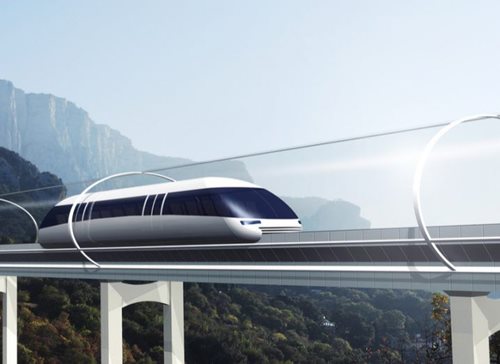 Image: andrey_l/Shutterstock
Image: andrey_l/Shutterstock
Just a few weeks ago, a true Irish underdog story was taking place at SpaceX’s headquarters in Hawthorne, California, as part of the company’s Hyperloop Pod Competition.
The challenge set to teams across the world was to build and test a pod capable of reaching the fastest speed possible on SpaceX’s purpose-built 1km track.
Among the teams from some of the most globally renowned engineering universities on the planet was a self-proclaimed “scrappy Irish team” called Éirloop, made up of students from several Irish institutions.
When we first spoke to them in February, the challenge seemed immense, not only from a technical standpoint, but the staggering cost of building a pod and flying it to California in time for the July competition.
Prize-winners
And yet, just a few months later, the team managed to pull together a wide array of financial and technical backers, setting them on a course that would eventually see them meet SpaceX founder Elon Musk.
The team’s work would have no doubt caught the famed figure’s eye. Though it eventually lost out in the running for the top spot, the pod did enough to impress, with Éirloop walking away with an innovation prize.
It was also one of only five teams out of 20 to actually be allowed to pass SpaceX’s rigorous safety checks.
We caught up with Dublin City University’s Akhil Voorakkara – the team’s head of electronics and marketing – to give us a glimpse of what was happening behind the scenes.
What was the build-up like? Any last-minute problems?
The build-up was incredibly intense. Even before the testing week started, we were working from 9am until 9pm in a workshop to get our pod ready for all the tests it would be put through.
Everybody’s focus was on the pod and nothing else. We barely ate or slept in the lead-up to testing week, but for us it was all worth it.
Once we entered testing week, things moved even faster than before as the core team worked insanely hard to ensure that our pod passed every test as quickly as possible, to ensure we would get a chance to run.
While there were definitely a good number of setbacks throughout the week that stemmed from us not knowing exactly what to expect, we refused to give up and really got stuck into our work.
We managed to pass all the tests in the end – something we know contributed to our innovation award.
How did you find being in such close proximity to the other teams?
Being in proximity to other teams was pretty good as it allowed us to exchange knowledge with many like-minded people in pursuit of the same goal.
At the same time, it presented to us a lot more distractions in the form of many curious people admiring our work. But, overall, we were happy to show off the amazing machine we built to people who truly were interested in what we did.
As for cooperation, there was definitely an atmosphere of collaboration around the tents as all the teams were more than happy to lend each other tools and other bits when others needed help.
What did you make of your overall performance in the end?
Despite being successful in our tests, it did not translate into our pod going in the main tube. Unfortunately, we passed our external subtrack test a little too late to make it into the schedule for the final.
Thankfully, we were warned a little before doing the external subtrack test that the final schedule was full up, so we treated it as a sort of high-speed run and pushed the throttle on our pod up to about 60pc. This resulted in an absolutely amazing run that saw the Éirloop pod accelerate to almost 1G [g-force] and reach over 50kph in just 20 meters before coming to a stop again.
This was the fastest external subtrack run in the history of the competition and, from analysing the data, we know that if we got into the tube, we could’ve given WARR [the eventual overall winners] some real competition.
We feel absolutely amazing. Performing as well as we did and receiving that award has given us immense confidence in the work we’re doing.
We now know that nothing we’ve done is in vain and that our ideas and work could actually change the future.
Is the pod still set to become part of next year’s entry?
Our pod is an investment for all of us, and we want to make sure we get the best value out of it as possible. We know that our pod has a lot left to give and that there is a huge amount of potential in there that is yet to be let out.
Doing as well as we did also has us feeling very, very excited about our chances at next year’s competition. We know we’ll be a shoe-in for as long as we keep up the hard work and stay innovative!
Colm Gorey
This article originally appeared on www.siliconrepublic.com and can be found at:
https://www.siliconrepublic.com/machines/eirloop-spacex-hyperloop-pod



